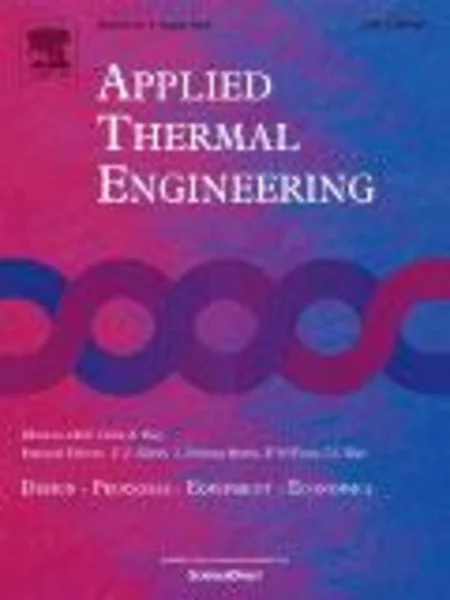-
calibration and validation of a model for simulating thermal and electric performance of an internal combustion engine-based micro-cogeneration device
جزئیات بیشتر مقاله- تاریخ ارائه: 1392/01/01
- تاریخ انتشار در تی پی بین: 1392/01/01
- تعداد بازدید: 796
- تعداد پرسش و پاسخ ها: 0
- شماره تماس دبیرخانه رویداد: -
the growing worldwide demand for more efficient and less polluting forms of energy production has led to a renewed interest in the use of micro-cogeneration technologies in the residential. among the others technologies, internal combustion engine-based micro-cogeneration devices are a market-ready technology gaining an increasing appeal thanks to their high efficiency, fuel flexibility, low emissions, low noise and vibration. in order to explore and assess the feasibility of using internal combustion engine-based cogeneration systems in the residential sector, an accurate and practical simulation model that can be used to conduct sensitivity and what-if analyses is needed. a residential cogeneration device model has been developed within iea/ecbcs annex 42 and implemented into a number of building simulation programs. this model is potentially able to accurately predict the thermal and electrical outputs of the residential cogeneration devices, but it relies almost entirely on empirical data because the model specification uses experimental measurements contained within a performance map to represent the device specific performance characteristics coupled with thermally massive elements to characterize the device's dynamic thermal performance. at the built environment control laboratory of seconda università degli studi di napoli, an aisin seiki micro-cogeneration device based on natural gas fuelled reciprocating internal combustion engine is available. this unit has been intensively tested in order to calibrate and validate the annex 42 model. this paper shows in detail the series of experiments conducted for the calibration activity and examines the validity of this model by contrasting simulation predictions to measurements derived by operating the system in electric load following control strategy. the statistical comparison was made both for the whole database and the segregated data by system mode operation. the good agreement found in the predictions of net electric power production, useful thermal output and primary power consumption allowed to conclude that the annex 42 model can be used to carry out a detailed performance assessment in order to examine the applicability of the aisin seiki unit for supplying building electrical and thermal energy requirements according to different load profiles during annual or multi-year operation.
حوزه های تحت پوشش رویداد
مقالات جدیدترین رویدادها
-
استفاده از تحلیل اهمیت-عملکرد در ارائه الگوی مدیریت خلاقیت سازمانی و ارائه راهکار جهت بهبود
-
بررسی تاثیر ارزش وجوه نقد مازاد بر ساختار سرمایه شرکت های پذیرفته شده در بورس اوراق بهادار تهران
-
بررسی تأثیر سطح افشای ریسک بر قرارداد بدهی شرکت های پذیرفته شده در بورس اوراق بهادار تهران
-
بررسی تأثیر رتبه بندی اعتباری مبتنی بر مدل امتیاز بازار نوظهور بر نقد شوندگی سهام با تأکید بر خصوصی سازی شرکت ها
-
تأثیر آمیخته بازاریابی پوشاک ایرانی بر تصویر ذهنی مشتری پوشاک ایرانی (هاکوپیان)
-
بررسی تغییر اندازه سنگ دانه ها بر روی خواص رئولوژیکی و مکانیکی بتن خود تراکم سبک ساخته شده با پوکه معدنی
-
شهرسازی و توسعه ناپایدار شهری؛ مطالعه موردی متروپل تبریز
-
بررسی مدلهای موجود برای هدایت حرارتی و ویسکوزیته در نانوسیال ها
-
بررسی آسیب شناسی آموزش مجازی درس علوم در دوره پیش دبستانی از منظر مربیان شهر میاندوآب
-
biosynthesis of benzoylformic acid from benzoyl cyanide by a newly isolated rhodococcus sp. cczu10-1 in toluene–water biphasic system
مقالات جدیدترین ژورنال ها
-
مدیریت و بررسی افسردگی دانش آموزان دختر مقطع متوسطه دوم در دروان کرونا در شهرستان دزفول
-
مدیریت و بررسی خرد سیاسی در اندیشه ی فردوسی در ادب ایران
-
واکاوی و مدیریت توصیفی قلمدان(جاکلیدی)ضریح در موزه آستان قدس رضوی
-
بررسی تاثیر خلاقیت، دانش و انگیزه کارکنان بر پیشنهادات نوآورانه کارکنان ( مورد مطالعه: هتل های 3 و 4 ستاره استان کرمان)
-
بررسی تاثیر کیفیت سیستم های اطلاعاتی بر تصمیم گیری موفق در شرکتهای تولیدی استان اصفهان (مورد مطالعه: مدیران شرکتهای تولیدی استان اصفهان)
-
نقش مدیریت شهری در مناطق حاشیه نشین با تاکید بر ایران
-
مدیریت و کاهش بهای تمام شده، با محوریت طبقه بندی طبیعی هزینه ها در کسب کارهای کارآفرینانه با رویکرد ارزش آفرینی
-
فرآیند پیش نگری ، تاثیرات آن در عکاسی فتوشیمیایی و نحوه احیاء آن در عکاسی دیجیتال
-
scrutinization of the relationship between organizational agility and the application of information and communication technology in the education organization of shirvan township in the year 2015
-
investigating the seismic performance of steel moment-resisting frames by using damage index




سوال خود را در مورد این مقاله مطرح نمایید :